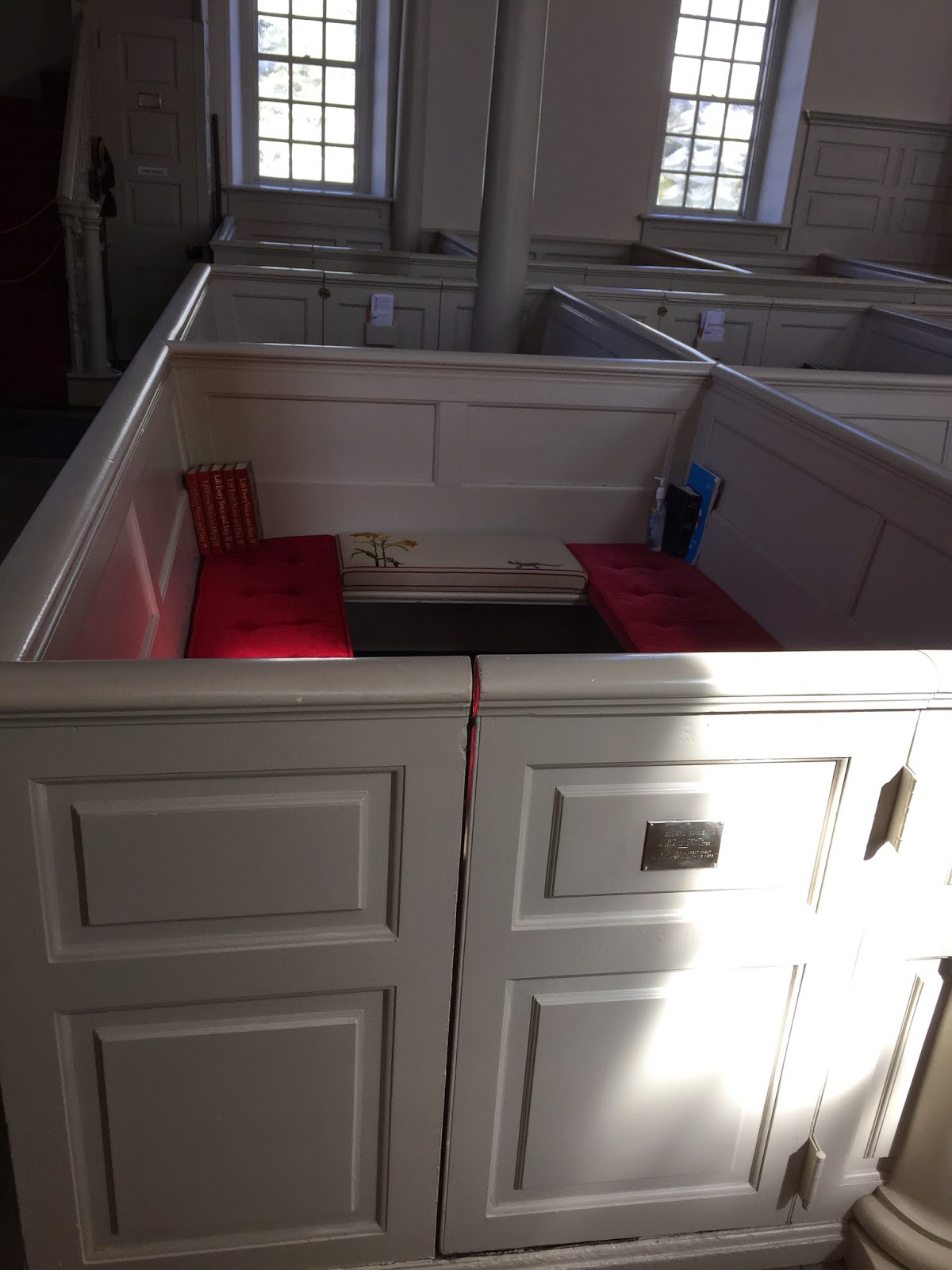In 1732, the Virginia General Assembly established Truro Parish, defining it as the lands in the colony above the Occoquan River, extending to the western frontier. As the only church within these boundaries, Pohick became the Parish Church of the newly formed district. Colonist residing within the parish soon elected twelve men to serve on the governing board known as the Vestry. It was within the whitewashed pews and under the cedars of the old Colonial Churches of Virginia (Pohick being one of the most historic) that there grew up the sturdy independence of thought and action that blossomed into the Revolution.
During the Colonial period, Pohick Church was the congregation of many of our country's most prominent families, including the Washington's, Mason's and the Fairfaxe's. It was also the church of my 5th and 6th great grandfather William Payne Sr and William Payne Jr as well as my 5th great grand uncle Edward Payne.
All three Payne's were vestrymen at the church along with George Washington and George Mason. From the early days of the Colony vestrymen had assumed civil functions that corresponded roughly to those of today's country commissions. In the words of Thomas Jefferson, they were the twelve "most discreet farmers, so distributed through the parish that every part of it may be under the immediate eye of some one of them." Their duties included not only the building and maintaining of suitable churches. They were to seek out and provide for the aged and sick and poor. They were responsible for binding out as apprentices the orphans, of whom there were many on account of plagues and Indian massacres. They were responsible also for illegitimate children born of indentured servants working out their bonds. Once every four years the vestrymen required the farmers of the parish to procession the lands; that is, the owners of adjoining farms were to walk their boundaries in company with a vestryman renewing blaze marks and resetting stones to forestall, in so far as possible, the land quarrels so common in a pioneer county. To carry out their various responsibilities, the vestrymen were empowered to levy taxes on all tithables in their parish. The vestrymen thus were the local representative of the people. From their number almost invariable were chosen the delegates to the House of Burgesses. Meeting every few months to oversee the spiritual and moral welfare of their parishes, to decide on the location of new churches and the number of pounds of tobacco to be levied per tithable, the Vestrymen trained themselves in the responsibilities of self-government and learned the art of give and take so essential to the democratic process.
One of the only surviving artifact is this baptismal font, which experts from the Asmolean Museum in Oxford identified as a large Medieval mortar. Likely dating from the eleventh or twelfth centuries, its large size suggests that it was taken from a monastery kitchen in England. The date 1773 was added when the original wooden church was erected. After the original church burned down this brick church was erected not far away. During the civil war the union solders striped everything inside of the church out and used it for firewood. The church has been reconstructed several times there is even some original Union soldiers graffiti on the walls. The baptismal font was found in a nearby farm field in which the farmer was using it for a horse trough.
In the early days of the church people would buy pews as a way to sponsor the church. George Washington bought two pews, of course they were way up front. Along side Washington was George Mason. Today they have plaques like the one below on the doors of the pews listing who original purchased them.
A pamphlet of the church has says the 8 pews to the right were reserved for "The Most Respectable Inhabitants and Housekeepers."
To both mine (and the women giving me a tour) surprise we discovered that Pew number 27 (one of the 8 pews mentioned above) was purchased and sponsored by Edward Payne (my 5th great grand uncle).
And his plaque
In 1776 Edward Payne was ordered to erect a new church in present-day Fairfax and it was called "Payne's Church".
If you are interested in more history of the Pohick church visit there website at http://www.pohick.org/history.html









No comments:
Post a Comment